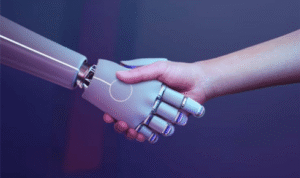
Tech
Tech is a term that describes the various ways in which we use technology. It includes computer science, communications technology, manufacturing industries, and the medical application of technology. It has its roots in scientific research and accumulation of knowledge. It is an essential component of society today. It is used in everything from medical diagnostics to building homes.
Computers
Computers are electronic devices that allow people to store, manipulate, and communicate information. They can be divided into two classes, general-purpose programmable machines (GPM) and mini-computers. The former are multi-user machines used by small businesses and firms, while mini-computers are typically used by departments within a company for specialized purposes. Mainframe computers, on the other hand, can support thousands of simultaneous users, and are primarily used by large firms that need to process large amounts of data. Large companies such as banks, insurance companies, and universities use mainframe computers to store information.
The computer hardware consists of various components, including the monitor, speakers, printer, keyboard, and mouse. The motherboard connects all of the hardware and is usually the central processing unit (CPU). This CPU processes data and carries out logical functions.
Communications technology
Information and communications technology is a combination of computers and telecommunications. Its main focus is on unified communications. These systems can help you stay connected with your business partners, improve your productivity, and enhance your customer service. You can find information and communications technology at all levels of the business, and the latest innovations can benefit any industry.
The evolution of communications technology has greatly improved our ability to exchange information. Using the latest technologies, communication has never been more affordable, faster, or easier. Examples of communication technology include telegraphs and telephones in the 19th century, cell phones in more recent years, and even smart cars.
Manufacturing industries
Manufacturing industries in tech utilize a variety of processes to produce their products. Laser engineering is often used, as is manual work for fine details. However, they do not rely on extensive assembly processes. Some high-tech goods are even produced using U.S. casting processes. These advances are advancing the field of technology.
The manufacturing industry has traditionally been driven by consumer demand, and these consumers are increasingly demanding more innovative and high-tech products. In response to this trend, manufacturers are using technology to increase their productivity and reduce costs. New innovations in manufacturing include cloud services for sharing data and resources, the internet of things for connecting and maintaining objects, and nanotechnology for super-precision manufacturing.
Medical applications of technology
Medical applications of technology help doctors diagnose and treat patients more efficiently. For example, artificial intelligence can help doctors to analyze patient records and deliver relevant information to patients. It can also be used to personalize content for doctors. A recent example of AI in healthcare is the Da Vinci surgical robot, which helps surgeons perform complex procedures. Other applications include robotic nurses that can run errands for nurses and diagnose illnesses.
Other medical applications of technology include wearable devices. These can provide personalized health information such as blood pressure, exercise checks, and calorie intake. Some of these wearable devices can even monitor an electrocardiograph.
Virtual reality headsets
A virtual reality headset is a head mounted device that lets the wearer immerse himself in a completely new world. They are commonly used with video games but are also used as training aids and simulators. Virtual reality headsets are extremely popular, and many people are now using them for training purposes, and even for gaming.
Virtual reality applications have many potential applications, and many industries are starting to take advantage of the technology. In the medical field, for example, virtual reality training can help patients deal with PTSD. It can also help product designers collaborate on virtual prototypes. Similarly, VR can be used by first responders to train in potentially dangerous situations.
Wearable technology
Wearable technology is a growing field that includes medical wearables, smart clothes, and other consumer accessories. Many of these products monitor heart rate, blood pressure, and other vital signs. Others can help monitor and treat disorders of the nervous system, such as Parkinson’s disease. Many of these products collect data and send it to healthcare providers through the cloud.
These technologies are becoming increasingly affordable and useful, and can be used to provide personalized, cost-effective healthcare services. They eliminate the need for costly medical facilities and skilled professionals. Because of their ability to communicate with personal computers and cloud servers, they are perfect for delivering healthcare in remote, decentralized, and personalized settings. Wearable devices can also collect real-time data, which can be assessed remotely by certified health professionals.







